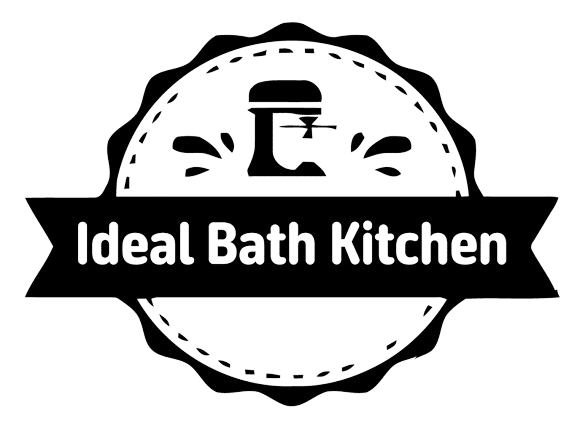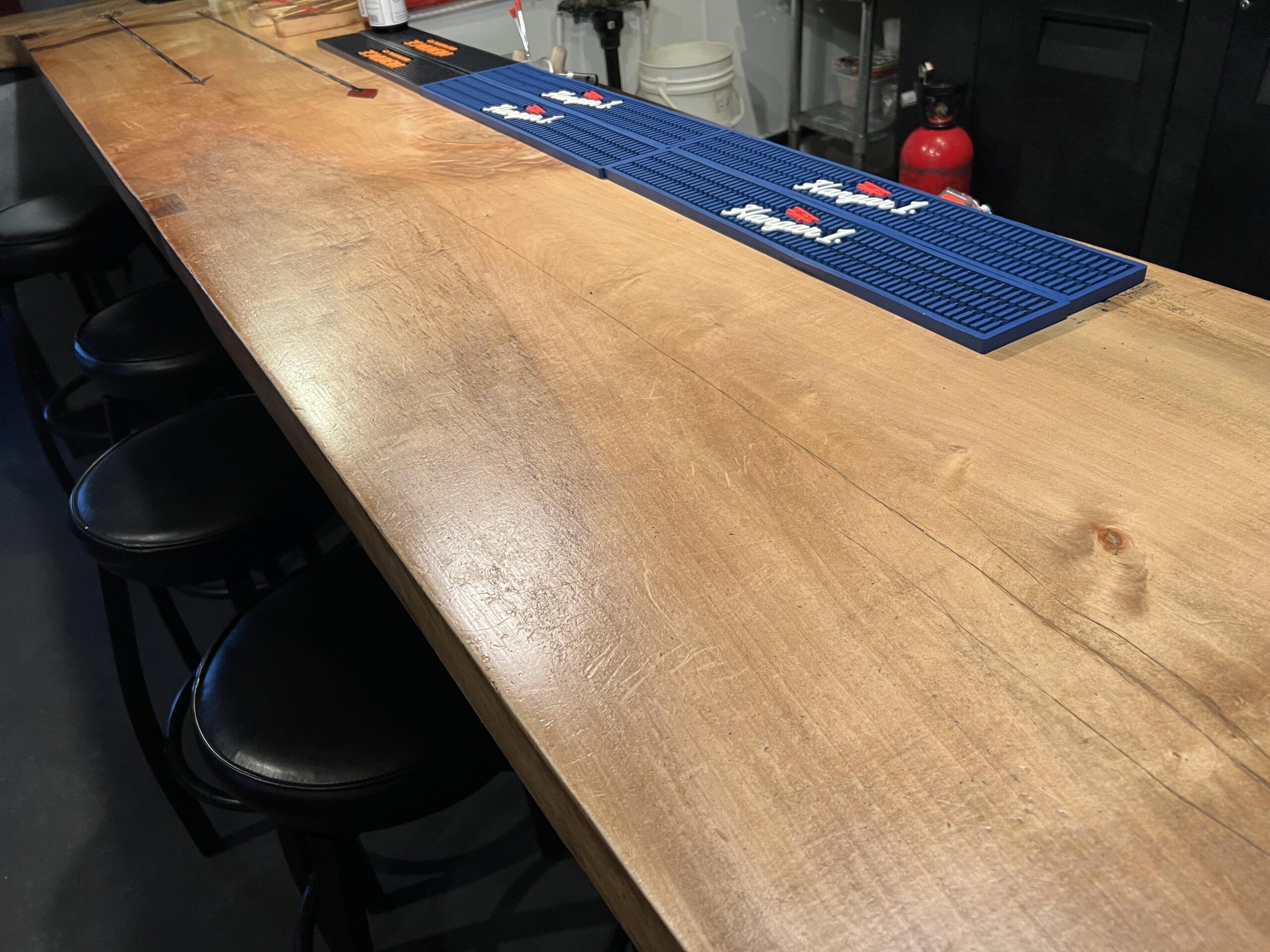Choosing the right finish for your kitchen table is crucial for both aesthetics and functionality. A durable polyurethane can protect your surface from spills, scratches, and heat. Options vary from oil-based to water-based formulas, each with distinct advantages. Oil-based finishes typically provide a richer color and enhanced durability, while water-based products dry faster and emit fewer fumes.
Understanding these differences helps you make an informed choice tailored to your lifestyle. This guide will unveil the top polyurethane options, ensuring your kitchen table remains beautiful and resilient for years to come.
Top Polyurethane for Kitchen Table in 2024
- Rank #1 – Varathane 200261H Water-Based Ultimate Polyurethane
- Rank #2 – Minwax 356100000 One Coat Polyurethane, Quart, Gloss
- Rank #3 – Varathane 262074 Water-Based Ultimate Polyurethane
- Rank #4 – Varathane 9061H Oil-Based Ultimate Polyurethane
Introduction to Polyurethane Finishes
Polyurethane finishes are popular choices for protecting kitchen tables. They create a tough barrier against spills and scratches. Choosing the right finish enhances durability and beauty. Understanding the types of polyurethane helps in making the best choice.
The Role of Polyurethane in Protecting Kitchen Tables
Polyurethane plays a crucial role in maintaining kitchen tables. It offers several benefits:
- Durability: It withstands daily use and wear.
- Water Resistance: Protects against spills and moisture.
- Easy to Clean: Smooth surface makes cleaning simple.
- Enhanced Appearance: Adds a rich, glossy finish.
These features make polyurethane a top choice for kitchen tables. It helps preserve wood’s natural beauty while providing long-lasting protection.
Types of Polyurethane: Water-based Vs. Oil-based
Understanding the two main types of polyurethane is essential. Each type has unique characteristics. Here’s a quick comparison:
| Feature | Water-Based Polyurethane | Oil-Based Polyurethane |
|---|---|---|
| Drying Time | Fast drying | Slow drying |
| Odor | Low odor | Strong odor |
| Color | Clear finish | Amber tint |
| Durability | Less durable | More durable |
| Cleanup | Soap and water | Mineral spirits |
Choose water-based for quick projects and low odor. Opt for oil-based for maximum durability and rich color.

Credit: n3nano.com
Criteria for Selecting The Best Polyurethane
Choosing the right polyurethane for your kitchen table is essential. The finish must withstand daily use and look great. Consider these key criteria to make the best choice.
Durability and Resistance to Damage
Durability is crucial for kitchen tables. The finish needs to endure scratches, heat, and spills. Look for these characteristics:
- Scratch Resistance: Choose a polyurethane that resists scratches well.
- Heat Resistance: Ensure it can handle hot dishes without damage.
- Water Resistance: Opt for a finish that repels moisture.
Some polyurethane options include:
| Type | Durability | Resistance |
|---|---|---|
| Oil-Based | High | Excellent |
| Water-Based | Moderate | Good |
Ease of Application and Maintenance
Application should be simple and hassle-free. Consider these factors:
- Application Method: Choose between spray, brush, or roll-on.
- Drying Time: Faster drying means less wait time.
- Cleanup: Water-based options clean up easily with soap and water.
Maintenance should be straightforward as well. Regular cleaning keeps the surface looking new.
Aesthetic Appeal: Matte, Satin, or Glossy Finishes
Finish types greatly affect the look of your table. Choose a finish that matches your style:
- Matte: Offers a soft, natural look.
- Satin: Balances sheen and elegance.
- Glossy: Provides a shiny, reflective surface.
Consider how each finish interacts with light. Glossy finishes highlight imperfections. Matte finishes hide them well.
Top Polyurethane Picks for Kitchen Tables
Choosing the best polyurethane for your kitchen table is crucial. A durable finish protects your table from scratches, stains, and heat. Here are the top picks that stand out in performance and longevity.
Leading Brands in Polyurethane Finishes
| Brand | Type | Finish |
|---|---|---|
| Minwax | Oil-based | Gloss |
| Rust-Oleum | Water-based | Satin |
| Varathane | Oil-based | Matte |
| Bona | Water-based | Gloss |
These brands have a solid reputation. They offer various finishes suitable for kitchen tables. Their products provide excellent protection and durability.
Product Reviews: Performance and Longevity
- Minwax Polyurethane:
- Easy to apply.
- Long-lasting finish.
- Resists scratches and stains.
- Rust-Oleum Ultimate Polyurethane:
- Quick drying.
- Water-resistant.
- Low odor.
- Varathane Diamond:
- Exceptional clarity.
- Superior scratch resistance.
- Self-leveling properties.
- Bona Traffic HD:
- Commercial-grade durability.
- Great for high-traffic areas.
- Easy maintenance.
These products excel in protecting kitchen tables. Choose the one that fits your needs best.
Application Tips for a Flawless Finish
Achieving a flawless finish on your kitchen table requires careful application of polyurethane. Follow these tips to ensure a durable, beautiful surface. Proper preparation and application techniques make a significant difference in the final result.
Surface Preparation Steps
Good preparation is crucial for a perfect finish. Follow these steps:
- Clean the Surface: Remove all dust and debris.
- Sanding: Use 120-grit sandpaper. Sand in the direction of the grain.
- Dust Removal: Wipe down with a damp cloth.
- Drying: Ensure the surface is completely dry.
- Test Area: Apply finish on a small, hidden spot first.
Best Practices for Applying Polyurethane
Applying polyurethane correctly enhances durability. Use these best practices:
- Choose the Right Brush: Use a high-quality synthetic brush.
- Thin Coats: Apply thin, even coats. Avoid heavy applications.
- Work with the Grain: Always brush in the direction of the wood grain.
- Drying Time: Allow adequate drying time between coats.
- Light Sanding: Sand lightly between coats with 220-grit sandpaper.
Follow these steps for the best results. Your kitchen table will look stunning and last longer.
Safety Measures and Environmental Concerns
When choosing polyurethane for your kitchen table, safety matters. Understanding the risks helps protect your health and the environment. Here are essential aspects to consider.
Ventilation and Protective Gear
Good ventilation is crucial. It helps reduce harmful fumes. Here are some tips:
- Open windows to increase airflow.
- Use fans to circulate air.
- Avoid working in small, closed spaces.
Wear protective gear to stay safe:
- Face Mask: Protects against inhaling harmful vapors.
- Goggles: Shields eyes from splashes.
- Gloves: Prevent skin contact with chemicals.
Eco-friendly Polyurethane Options
Eco-friendly polyurethane options are available. These are safer for you and the planet. Here are some choices:
| Type of Polyurethane | Benefits |
|---|---|
| Water-Based | Low odor, quick drying, easy cleanup. |
| Low-VOC | Fewer harmful emissions, healthier indoor air. |
| Natural Oil-Based | Made from renewable resources, biodegradable. |
Choosing these options supports a healthier environment. Protect your family while ensuring durability for your kitchen table.

Credit: emmamason.com
Maintenance of Polyurethane-coated Tables
Polyurethane-coated tables are durable and beautiful. Proper maintenance keeps them looking great. Here are key tips for maintaining your table.
Routine Cleaning and Care
Cleaning is essential for preserving the finish. Follow these simple steps:
- Use a soft cloth for dusting.
- Clean spills immediately with a damp cloth.
- Avoid harsh cleaners that can damage the finish.
For deeper cleaning:
- Mix a few drops of mild dish soap with water.
- Soak a cloth in the solution.
- Wipe the table gently.
- Rinse with a clean damp cloth.
- Dry immediately with a soft towel.
Dealing With Scratches And Heat Marks
Scratches and heat marks can happen. Here’s how to fix them:
| Issue | Solution |
|---|---|
| Light Scratches | Use a wood filler or crayon matching the color. |
| Deep Scratches | Sand the area lightly and apply a polyurethane touch-up. |
| Heat Marks | Rub a mixture of baking soda and water gently on the mark. |
Prevention is key. Use coasters and placemats to protect the surface.
With proper care, your polyurethane-coated table will last for years. Enjoy your beautiful and durable kitchen table!
The Longevity Of Polyurethane Finishes
Polyurethane finishes are popular for kitchen tables. They offer strong protection and last a long time. Understanding their longevity helps you make the best choice. Here’s what you need to know about their lifespan and maintenance.
Expected Lifespan Under Daily Use
The lifespan of a polyurethane finish depends on several factors:
- Type of Polyurethane: Water-based lasts about 3-5 years.
- Oil-based Polyurethane: Lasts up to 10 years.
- Daily Use: Heavy use can reduce lifespan.
Here’s a quick comparison:
| Type | Lifespan | Best For |
|---|---|---|
| Water-based | 3-5 years | Light use |
| Oil-based | 7-10 years | Heavy use |
Proper care can extend the life of your finish. Regular cleaning helps keep it looking new.
When To Recoat Your Kitchen Table
Knowing when to recoat is key for maintenance. Look for these signs:
- Scratches: Noticeable scratches on the surface.
- Dullness: Loss of shine after cleaning.
- Stains: Hard-to-remove stains that affect appearance.
Recoat every 3-5 years for water-based finishes. For oil-based finishes, aim for every 5-10 years. Follow these steps to recoat:
- Clean the surface thoroughly.
- Lightly sand the old finish.
- Apply the new coat evenly.
This process keeps your kitchen table durable and beautiful.
Credit: www.facebook.com
Conclusion: Your Table’s Best Defense
Choosing the right polyurethane is crucial for your kitchen table. A durable finish protects against scratches, spills, and heat. This defense keeps your table looking new for years.
Summarizing The Ideal Polyurethane Choices
Here’s a quick overview of the best polyurethane options:
| Type of Polyurethane | Durability | Best Use |
|---|---|---|
| Water-Based Polyurethane | Moderate | Light use, easy cleanup |
| Oil-Based Polyurethane | High | Heavy use, excellent protection |
| Gel Polyurethane | High | Vertical surfaces, thick coats |
Each type has unique features. Select the one that suits your needs best.
Final Thoughts on Preserving Your Kitchen Table
Protecting your kitchen table is essential. Follow these tips for long-lasting beauty:
- Regular Cleaning: Wipe spills immediately.
- Avoid Harsh Chemicals: Use mild soap and water.
- Coasters and Placemats: Prevent scratches and heat damage.
- Reapply Finish: Refresh the polyurethane every few years.
With proper care, your table will withstand daily use. A great polyurethane finish is your table’s best defense against wear and tear.
Frequently Asked Questions
What Is The Best Polyurethane for Kitchen Tables?
The best polyurethane for kitchen tables is water-based polyurethane, offering durability and ease of application.
How Long Does Polyurethane Last on Tables?
A high-quality polyurethane finish can last 5-10 years with proper care and maintenance.
Is Oil-based Polyurethane Better Than Water-based?
Oil-based polyurethane provides a richer finish but takes longer to dry compared to water-based options.
Can I Apply Polyurethane Over Stained Wood?
Yes, polyurethane can be applied over stained wood, enhancing the color while providing a protective layer.
How Many Coats of Polyurethane Are Needed?
Typically, 2-3 coats of polyurethane are recommended for optimal protection and durability on kitchen tables.
Conclusion
Choosing the right polyurethane for your kitchen table is crucial for durability and appearance. The finishes highlighted in this post offer excellent protection against wear and tear. A well-finished table enhances your kitchen’s aesthetic and longevity. Invest wisely to enjoy a beautiful and resilient surface for years to come.


